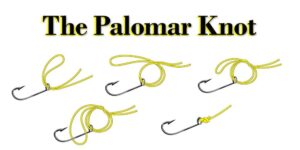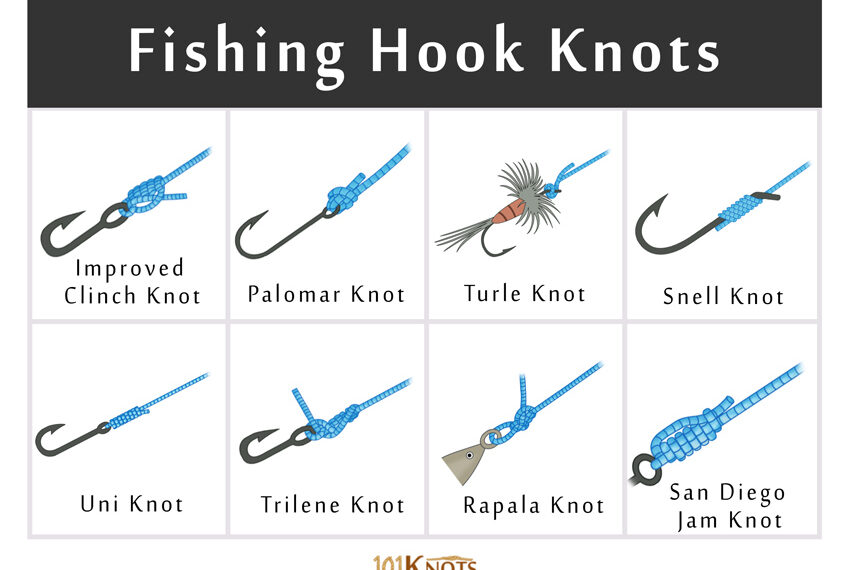Fishing is a popular activity enjoyed by millions of people around the world. Whether you are a beginner or an experienced angler, one of the most critical skills you need to learn is how to tie different fishing knots. The right knot can make all the difference when it comes to catching fish. In this article, we will discuss how to tie different fishing knots for different situations in 2023.
Before we dive into the different knots, it is essential to understand the importance of using the right knot for the right situation. Different knots are designed to handle different types of fishing lines, lures, and hooks. Using the wrong knot can result in lost fish or even equipment failure.
Different Fishing Knots for Different Situations in 2023
The Uni Knot
The Uni Knot is a basic fishing knot that is easy to learn and incredibly versatile. It is suitable for tying most types of fishing lines, including monofilament, fluorocarbon, and braided lines. This knot is ideal for attaching lures or hooks to your fishing line.
To tie the Uni Knot, follow these steps:
- Thread the end of your fishing line through the eye of your hook or lure.
- Bring the end of your line back towards the standing line, forming a loop.
- Take the end of your line and wrap it around both the standing line and the loop you just created.
- Repeat this process four to six times.
- Pull the end of your line to tighten the knot.
- Trim the excess line.
The Palomar Knot
The Palomar Knot is another essential knot that is used for attaching lures or hooks to your fishing line. It is ideal for use with braided lines and is known for its strength and reliability.

To tie the Palomar Knot, follow these steps:
- Double your fishing line and pass it through the eye of your hook or lure.
- Tie a simple overhand knot in the doubled line, leaving the hook or lure hanging about six inches from the end.
- Take the loop and pass it over the hook or lure.
- Tie another overhand knot in the doubled line, passing the hook or lure through the loop.
- Pull the tag end and standing line to tighten the knot.
- Trim the excess line.
The Blood Knot
The Blood Knot is a popular knot among fly fishermen and is used to join two lines of different sizes. It is an excellent knot for tying tippets or leaders to your mainline.
To tie the Blood Knot, follow these steps:
- Take two lines of different sizes and overlap them.
- Make five turns with one end around the other line.
- Bring the end back between the two lines.
- Make five turns with the other end around the other line, in the opposite direction.
- Bring the end back between the two lines, but in the opposite direction from the first end.
- Moisten the knot and pull the two lines in opposite directions to tighten.
- Trim the excess line.
The Surgeon’s Knot
The Surgeon’s Knot is a simple knot that is often used to join two lines of the same or different sizes. It is an excellent knot for attaching a leader to your mainline, or for connecting two pieces of fishing line.
To tie the Surgeon’s Knot, follow these steps:
- Overlap the ends of the two lines you want to join.
- Tie a simple overhand knot, but do not tighten it.
- Pass the end of one line through the loop created by the overhand knot.
- Bring the end back over the top of the loop and pass it through again.
- Moisten the knot and pull the two lines in opposite directions to tighten.
- Trim the excess line.
The Improved Clinch Knot
The Improved Clinch Knot is a reliable knot for attaching lures or hooks to your fishing line. It is ideal for use with monofilament and fluorocarbon lines and is known for its strength and reliability.
To tie the Improved Clinch Knot, follow these steps:
- Thread the end of your fishing line through the eye of your hook or lure.
- Bring the end of your line back towards the standing line, forming a loop.
- Take the end of your line and wrap it around the standing line five to seven times.
- Bring the end of your line back through the loop you created.
- Moisten the knot and pull the standing line to tighten.
- Trim the excess line.
One of the best ways to improve your knot-tying skills is to practice regularly. Start by learning the basic knots and then move on to more advanced ones. You can practice tying knots at home or while fishing, but make sure to use the appropriate lines and hooks for each knot.

Another useful tip is to keep a knot-tying guide with you while fishing. This can be a printed guide or a mobile app that provides step-by-step instructions for tying different knots. Having a guide can save you time and frustration when trying to tie a knot in the field.
It is also important to inspect your knots regularly to ensure they are in good condition. Exposure to the elements and repeated use can weaken knots over time, so it’s essential to check your knots before each fishing trip. If you notice any signs of wear or damage, re-tie the knot or replace your line.
Lastly, it is crucial to use the right knot for the right situation. For example, using a knot that is not suitable for braided lines can result in failure and lost fish. Take the time to understand the properties of different lines and knots to determine which ones are best suited for various fishing scenarios.
In conclusion, tying different fishing knots for different situations is an essential skill that every angler should learn. Each knot has its unique properties and is designed to handle specific fishing scenarios. By mastering these knots, you will increase your chances of catching more fish and enjoying a successful day on the water. Remember to practice each knot until it becomes second nature, and always check your knots for strength and reliability before casting your line.











